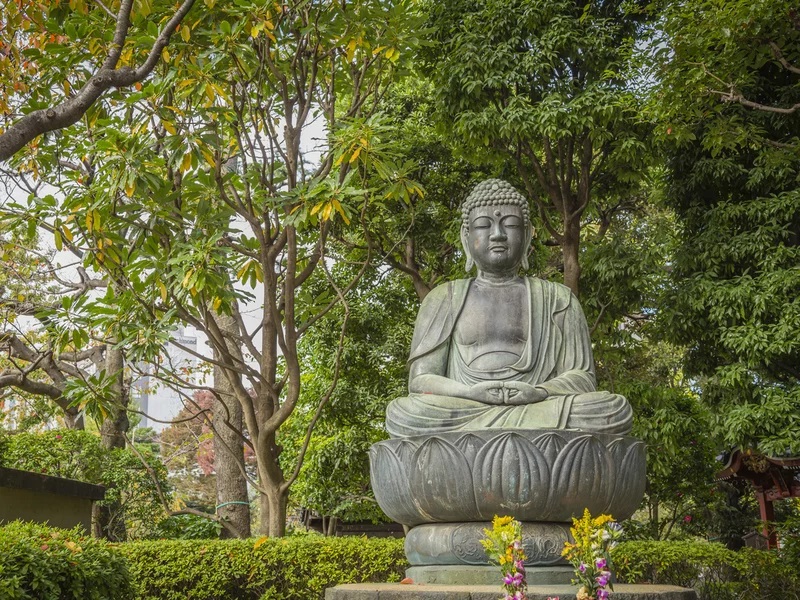As we move through life, we so often focus what make makes us distinct. Why are we made the way we are? What do we bring to the table that is unique and novel? While we like to think of ourselves as fully independent beings, Buddhist practices urge us to look more deeply into the ways we are connected. What happens, then, when we consider not just an individual’s sense of self, but a whole nation’s sovereignty and sense of culture in the realm of interdependence? In an increasingly globalized society, interbeing and interdependence often come in friction with nationalistic values. In this paper, I seek to reveal the extent to which nationalism comes in conflict with interdependence through Tibet’s struggle for freedom under Chinese rule.
The idea of interdependence or interbeing comes from the Buddhist idea that all things on this Earth are connected. In Peace is Every Step Thich Nhat Hahn explains his idea of “interbe” or “interbeing” as a tie that connects each of us together. “It is not possible to be alone,” he says, “You need other beings to be. That is the idea of interbeing.” Since all mankind are made of nonman elements, our protection of non-man made elements also protects ourselves, our children, and all other man made elements on the earth. While it is fairly easy to extend the idea of interdependence and interbeing to a universal connection between man and nature, when considering different cultures, societal structures, and nationalistic values it can become quite difficult to let interdependence guide one’s interactions.
In the past, our world was less connected, less focused on “interdependence,” in relation to others, enabling each nation the ability to solve most problems at a local level. With today’s growing globalization, however, the world is getting smaller, less insular and more internationally connected. Gone are the days where one nation could solve its problems completely by itself. Some nations still prefer to step back and focus inwardly on their own matters of identity and issues within themselves. However, in order to properly align with Buddhism’s idea of interdependence, and effectively cooperate with other nations, each nations must acknowledge their own role and impact on the rest of the world.
One of the greatest cases of the global conflict in regards to the friction between interdependence, nationalism, and even human rights is the conflict between Tibet and China. When China took control over Tibet’s lands, they not only took the physical assets of land and resources, but also infringed on the Tibetan sense of identity and culture. Rather dwelling on China’s wrong-doings, the Dalai Lama suggests engaging in dialogue through a lens of interdependence. “It is my firm belief that if we adopt the right approach and make determined efforts, even in circumstances where great hostility has come about over time, trust and understanding can be restored,” Dalai Lama says, “This is the approach I too have adopted with regard to the Chinese authorities concerning the issue of Tibet.” (The Sun Behind the Clouds).
As part of the “Middle Way” approach, the Dalai Lama aims to strike a balance of regaining Tibet’s sense of sovereignty while still negotiating peacefully with China. In maintenance with Tibet’s Buddhist values, the Dalai Lama asks for: transformation of the whole of Tibet into a zone of peace, abandonment of China’s population transfer policy that threatens the very existence of the Tibetans as a people, respect for the Tibetan people’s fundamental human rights and democratic freedoms, restoration and protection of Tibet’s natural environment and abandonment of China’s use of Tibet for the production of nuclear weapons and dumping of nuclear wastes, and commencement of earnest negotiations on the future of Tibet and of relations between the Tibetan and Chinese peoples. In an ideal world, the Dalai Lama’s requests strike a fair balance between establishing Tibetan rights and culture and allowing China certain freedoms in their control over the land. However, reality is not so ideal. When the Dalai Lama attempted to engage China in dialogue, he did not even receive a response. Ultimately, interdependence and peaceful dialogue rely heavily on the willingness of others to converse and collaborate as well.
Another complication with interdependence and the middle way is their inability to give Tibet full on independence. Other Tibetans advocate for peaceful protests in pursuit of a truly “Free Tibet.” While they may not necessarily be opposed to conversation, their method is more about having their voices heard and reclaiming Tibet’s sense of identity as a whole. By looking past the Dalai Lama’s adherence to interdependence, advocates of “Free Tibet” are able to more readily prioritize issues of nationalism than through a compromise.
Tibet’s divide on which method best gets at solving their struggle for freedom under Chinese rule reflects a greater friction between nationalism and interdependence. In a globalized society, abiding by the idea of interdependence requires a degree of sacrifice, often in regards to nationalism and ideas surrounding identity. Ideally, interdependence seeks to find solutions that are harmonious and beneficial to each party involved. However, the world can be unforgiving, leaders and nations can get swept up in self interest, and rarely do ruling powers actively consider how to best work towards an ever- peaceful world. While nationalism itself can be quite powerful force in uniting peoples together and building sense of culture, it often fails to work alongside interdependence due to its reliance on the concept of singular identity.


Recent Comments